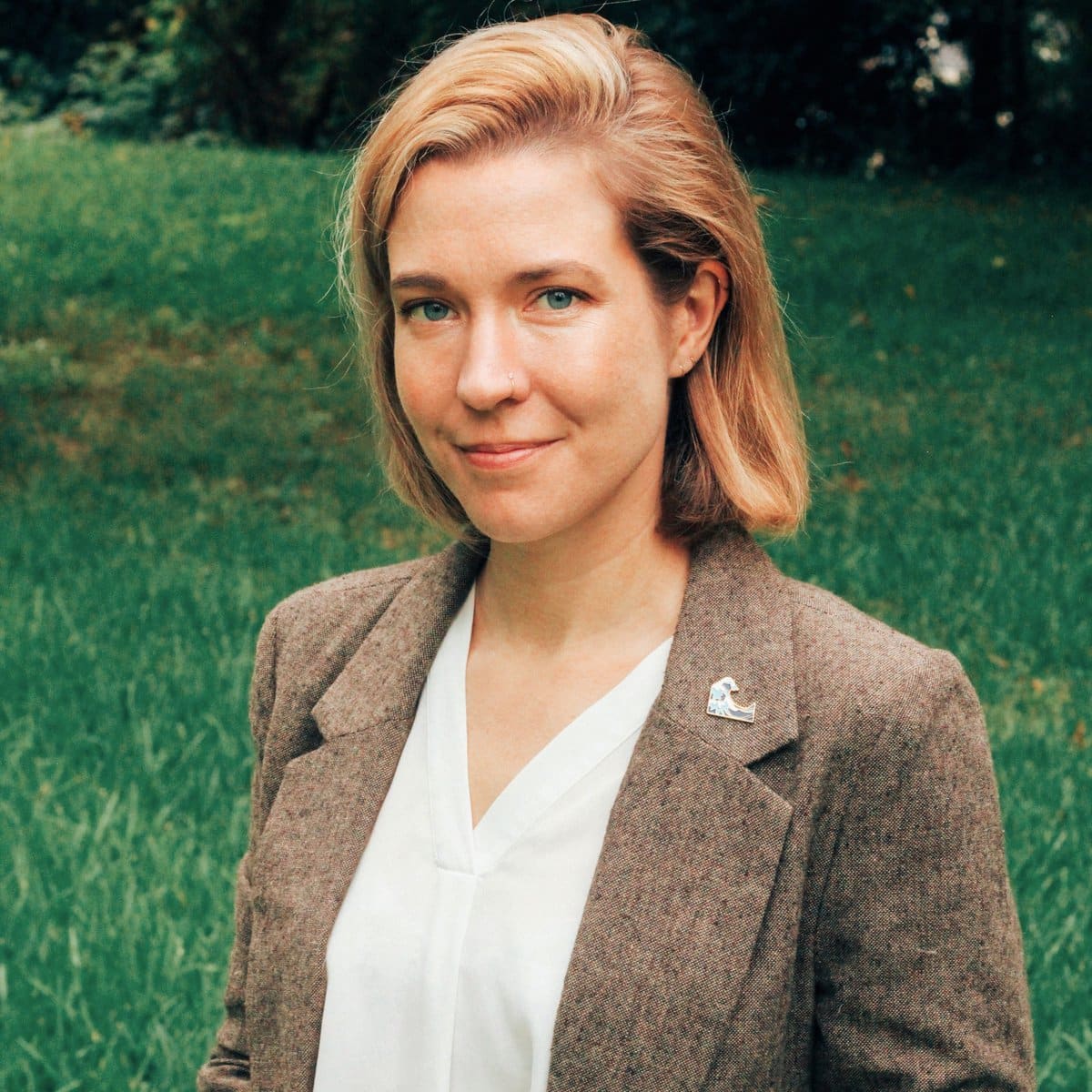If you’ve ever walked along a beach, you’ve likely noticed the dunes, the mounds of sand that have been formed by the wind. But have you ever thought about what those dunes do and how important they are? Perhaps not; our guests certainly have. In Season 6, Episode 7, host Sarah Thorne is joined by cohost Amanda Tritinger, Deputy Lead of the Engineering with Nature Program, and her US Army Corps of Engineers (USACE) colleagues Duncan Bryant, Research Hydraulic Engineer, and Nick Cohn, Research Oceanographer. All three are affiliated with the Coastal and Hydraulics Laboratory at the USACE Engineer Research and Development Center. They’re passionate about “dune stewardship,” protecting and restoring the dunes that create resilience for coastal communities. As Amanda describes it, “People tend to overlook dunes and the role they play, especially during hurricane season. Dunes can make the difference, and they play such a big role in the defense of our coastlines during hurricane seasons.”
Duncan grew up in the South Carolina Lowcountry where his interest in the coastal environments grew from his experience with Hurricane Hugo in 1989. Duncan explains that dunes are formed by a combination of sand, wind that shapes the sand into mounds, and vegetation. They’re much more complicated than just the mounds of sand we see. Dunes are naturally very dynamic. They can form and grow. They can be eroded. They can shift. “Things that change over time or move, like water and sand and dunes, are much more dynamic, and their nature is much more interesting. That’s kind of how I found myself moving from a structural engineering background as an undergraduate into a coastal engineering background as a grad student.”

During his PhD work, Nick focused on the “spectacular” dune systems in Oregon and Washington, where there was a confluence of factors, including big sediment supply, wide beaches, and lots of wind. He too is intrigued by the complexity of dunes, the interplay between wind-driven processes, wave-driven erosion, and the effects of plant species and density. “A lot of these storms in the Outer Banks and elsewhere where we have big wind events during storms actually grow dunes pretty substantially, but what we hear in the news all the time is how storms erode dunes. That’s why they’re so complicated. Sometimes it’s just about the details of maybe; if there was one foot more of storm surge, that dune would get eroded out. So, we do lots of research both in the field and the laboratory and with models trying to understand what details matter about our prediction of dunes.”

Dunes are a critical nature-based solution. As Nick explains, “Dunes serve as a topographic high that prevents high water from flooding—even small amounts of flooding—in terms of people’s property and critical infrastructure. And they’re a really cost-effective, natural form of infrastructure to prevent flooding. As we get through the end of hurricane season, I think we always try to make the case that dunes are a really valuable form of coastal protection that really can be put almost anywhere throughout the world, without hard structural solutions.”
Amanda underscores the potential value of dunes for coastal resilience: “I think expanding the use of dunes is an exciting prospect. Everybody in the coastal community has some major storm event, some hurricane, that sticks in their mind. For me, it was Hurricanes Matthew and Irma. For both, I was in northeast Florida, and we did forensic studies before and after each of those storms. You could walk up and down the coastline and just see the difference. The communities that had older, more natural dune systems got out almost unscathed, whereas the communities that had newer dunes or no dunes saw a lot more damage after the storms.”
Nick describes the research to better understand the physics underlying the growth and erosion of dune systems. “Traditionally, we’ve had different tools that have simulated how dunes grow, the interplay between ecological processes and wind-driven processes. And we have tools that try to predict wave-driven processes, whether it’s due to erosion or the diffusion of beach nourishments by waves. Where we’re really headed is building unified tools that combine all these processes so that we have the ability to simulate coastal evolution across these timescales of seconds, hours, and even potentially decades, so that we can better design resilient coastal systems.”
Duncan describes some of the research that he is doing investigating the critical vegetation component of dunes, trapping the windblown sand, contributing to the reduction of erosion during storm events. “It’s not only what you see above the ground; it’s also what you don’t see, what’s in the soil, the roots, and the biomass, that is continuously building up layers of sand and biomass as time goes on. Even though we think of dunes as maybe sand only, there’s really a lot more intricate process going on. If there’s biomass, then there’s all these other biological processes that are happening within the dune. There’s going to be microbial activity, there’s the funguses that live with those plants in some type of symbiotic relationship. And so, these things can all have an effect on how the sand actually behaves during an event.”
Looking to the future, Nick notes the need for collaboration: “We’ve already seen the sort of natural progression of linking different fields, ecology, engineering, and physical sciences. We’re going to continue to see really interdisciplinary collaborations that recognize all the intricacies and complex parts that we need to understand regarding how dunes can be forms of resilient infrastructure into the future.” Duncan notes the value of modeling for helping communities understand and decide among their options. “A community may have multiple options for coastal protection. They may have a dune option, a seawall option, a double dune option. Giving them the tools so they can decide based on the modeling what’s the best option for them.” His request to coastal communities is “don’t look at the dune as a block to your view of the ocean, as an obstruction. They are there for a good reason and they serve so many purposes, not just coastal protection but also for ecology. We just need to think about that and figure out how to include dunes more in the design going forward for coastal communities.”
Amanda’s call to action speaks to her passion as a dune steward: “Understand the dunes. Take the time to learn the dune story. If you go to the beach and you appreciate the water, that magical place where the water meets the land, where we get to touch the rest of the world, know the story of the dune. It provides that ecological benefit. It takes care of the communities behind it. It’s dynamic. It’s exciting. It’s doing its job if it’s disappearing and it’s doing its job when it builds itself up. Just appreciate the dunes when you’re out there. I just think if more people knew the dunes story and told each other about it and knew just how magical that thing they walk over on the way to the beach was, that that would just be a win in itself.”










